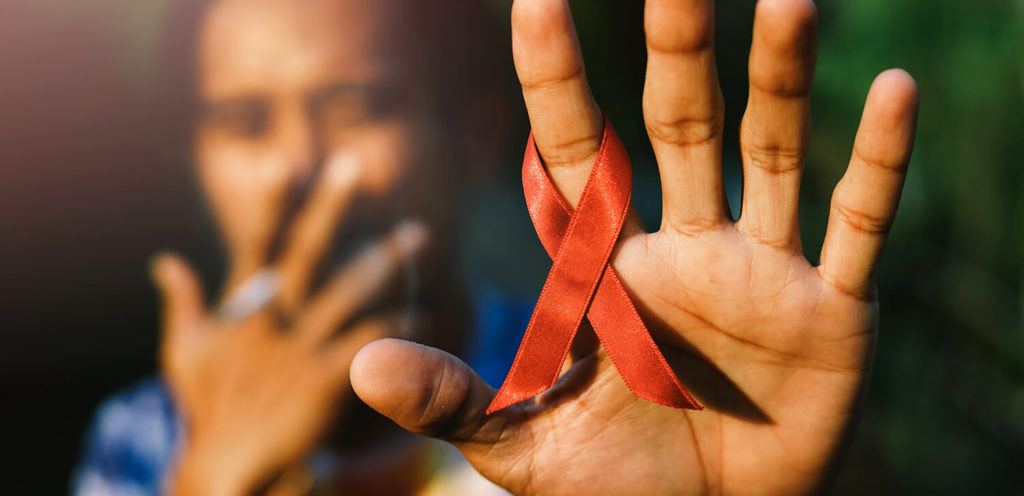2 out of 3 Nigerians living with HIV are not receiving treatment
No thanks to Nigeria’s poor performance, West and Central Africa region at its current pace cannot achieve global HIV goals. On the other hand, Eastern and southern Africa region has seen significant domestic and international investments coupled with strong political commitment and community engagement and is showing significant progress in achieving the 2020 targets.
The Joint United Nations Programme on HIV/AIDS (UNAIDS) has raised alarm over Nigeria’s snail speed in the fight against HIV. It noted that in the past 7 years, new HIV infections declined in Nigeria by only 5% (9000) from 179 000 to 170 000 against the 18% reduction rate recorded globally.
The report added that In Nigeria, only one in three people living with HIV is on treatment (33%), although HIV treatment coverage has increased from just 24% two years ago.
According to the latest report released by UNAIDS, Nigeria is responsible for more than half (51%) of the HIV burden in Western and Central Africa. This indicates that Nigeria is slowing down efforts in the entire region.
Western and Central Africa accounts for 21% of the world’s new HIV infections and 30% of global deaths from AIDS-related illness. While a regional catch-up plan has been implemented in the region since 2016, it has not yet translated into a significative change in the rate of programme scale-up.
UNAIDS noted that tailored combination prevention packages for adolescent girls, young women and key populations are a priority and should be implemented with greater urgency.
“A priority issue facing western and central Africa is the extremely low coverage of antiretroviral therapy among children. Treatment coverage among children (aged 0–14 years) is lower than among adults (aged 15 years and older) globally, but the disparity in western and central Africa is often huge: for instance, less than one in five children living with HIV were accessing antiretroviral therapy in Chad, Congo, Equatorial Guinea, Guinea, Guinea-Bissau, Liberia and Sierra Leone,” UNAIDS stated.
The latest data showed only 26% of children and 41% of adults living with HIV had access to treatment in western and central Africa in 2017, compared to 59% of children and 66% of adults in eastern and southern Africa.
Eastern and Southern Africa region is also performing better than Western and Central Africa in the reduction of AIDS-related deaths. Since 2010, AIDS-related deaths have fallen by 24% in Western and Central Africa, compared to a 42% decline in Eastern and Southern Africa.
Across the world, new HIV infections declined from 2.2 million in 2010 to 1.8 million in 2017. Although this is nearly half the number of new infections compared to the peak in 1996 (3.4 million), UNAIDS noted that the decline is not quick enough to reach the target of fewer than 500 000 by 2020.
UNAIDS commended eastern and southern Africa where the reduction in new HIV infections has been strongest. New HIV infections have been reduced by 30% since 2010.
But it is not only Nigeria that is slowing down the global efforts as new HIV infections are rising in around 50 countries. In eastern Europe and central Asia the annual number of new HIV infections has doubled, and new HIV infections have increased by more than a quarter in the Middle East and North Africa over the past 20 years.
In 2017, an estimated:
36.9 million people globally were living with HIV
21.7 million people were accessing treatment
1.8 million people became newly infected with HIV
940 000 people died from AIDS-related illnesses
The report shows that the gains made for children are not being sustained. New HIV infections among children have declined by only 8% in the past two years, only half (52%) of all children living with HIV are getting treatment and 110 000 children died of AIDS-related illnesses in 2017. Although 80% of pregnant women living with HIV had access to antiretroviral medicines to prevent transmission of HIV to their child in 2017, an unacceptable 180 000 children acquired HIV during birth or breastfeeding—far away from the target of fewer than 40 000 by the end of 2018.
Due to the impact of antiretroviral therapy roll-out, UNAIDS noted that globally, the number of AIDS-related deaths is the lowest this century (940 000), having dropped below 1 million for the first time in 2016. Yet, the current pace of decline is not fast enough to reach the 2020 target of fewer than 500 000 AIDS-related deaths.
In just one year, an additional 2.3 million people were newly accessing treatment. This is the largest annual increase to date, bringing the total number of people on treatment to 21.7 million.
Almost 60% of the 36.9 million people living with HIV were on treatment in 2017, an important achievement, but to reach the 30 million target there needs to be an annual increase of 2.8 million people, and there are indications that the rate of scale-up is slowing down.
